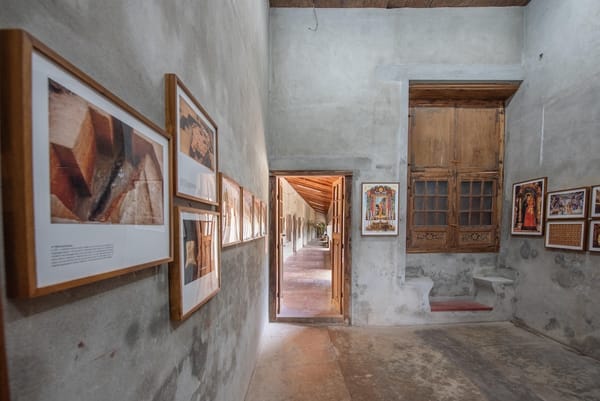Tips for Capturing Stunning Landscape Photos
Discover how to elevate your landscape photography through thoughtful composition, light, and patience. From mastering exposure to telling visual stories, these essential tips will help you capture the beauty and emotion of the natural world.

There’s something timeless and universal about landscape photography. From the misty hills of Tuscany to the deserts of Rajasthan, landscapes invite us to pause and look — to experience the world not just as it is, but as we feel it. Great landscape photographs transport viewers, evoking atmosphere, memory, and awe.
But behind every breathtaking landscape image lies careful preparation, patience, and a deep understanding of light, composition, and timing. Whether you’re exploring vast wildernesses or finding beauty in your local park, the principles of strong landscape photography remain remarkably consistent.
Here are some essential tips for capturing landscapes that are not only technically impressive but also emotionally resonant.
1. Scout and Study Your Location
The best landscape photographers are part artist, part explorer. Long before the shutter clicks, they study their subjects — understanding how the terrain interacts with light, weather, and season.
Do your research: Before visiting a location, look up images of the area, read local guides, and check topographic maps. Apps like PhotoPills, Google Earth, or The Photographer’s Ephemeris can show you how the sun and moon will move across your chosen site.
Arrive early: There’s no substitute for time spent on location. Walk around, observe the direction of light, and find interesting foreground elements such as rocks, flowers, or reflections that can anchor your composition. Sometimes the best shot isn’t the obvious one — it’s the quiet viewpoint a few steps off the trail.
2. Master the Magic Hours
Ask any landscape photographer about their favourite times of day, and they’ll tell you: sunrise and sunset. Known as the golden hours, these fleeting windows offer soft, warm light that enhances textures and creates dramatic skies.
At sunrise, the world feels fresh, the air is often clear, and the low angle of light produces long, elegant shadows. At sunset, colours deepen, contrast softens, and the atmosphere turns cinematic.
But don’t overlook the blue hour — the twilight just before sunrise or after sunset — when the sky glows in luminous shades of indigo and violet. These cooler tones can lend serenity and mystery to your images.
Remember: light defines landscape photography. Chasing perfect light is often more important than chasing perfect weather.
3. Use the Right Gear, but Keep It Simple
While gear doesn’t make the photographer, certain tools can elevate your landscapes dramatically.
Camera: A DSLR or mirrorless camera gives you manual control and dynamic range, but today’s high-end smartphones can also produce impressive results when used thoughtfully.
Lenses: A wide-angle lens (such as 16–35mm) captures sweeping vistas, while a telephoto lens (70–200mm or beyond) can isolate distant mountains or compress perspective for dramatic effect. Many professionals carry both to offer flexibility in framing.
Tripod: Essential for stability, especially in low light or when shooting long exposures. A sturdy yet lightweight tripod allows you to capture crisp details without camera shake.
Filters:
- Polarizing filters reduce glare and enhance the saturation of skies and foliage.
- Neutral density (ND) filters let you use longer shutter speeds even in bright light — perfect for smoothing water or capturing cloud movement.
- Graduated ND filters balance exposure between bright skies and darker foregrounds.
Still, remember that gear is only a means to an end. The most powerful landscapes often depend more on vision than equipment.
4. Compose with Intention
Composition transforms a scene from ordinary to unforgettable. To create balance and depth, consider these foundational principles:
a. The Rule of Thirds: Imagine dividing your frame into nine equal sections with two horizontal and two vertical lines. Position key elements — the horizon, a tree, a mountain peak — along these lines or their intersections. This creates harmony and visual interest.
b. Leading Lines: Use natural features like rivers, roads, fences, or ridgelines to draw the viewer’s eye into the scene. Leading lines give your photo a sense of journey and perspective.
c. Foreground, Middleground, Background: Layering adds depth. A textured rock in the foreground, rolling hills in the middle, and a glowing sky beyond can create a three-dimensional feel.
d. Frame Within a Frame: Look for natural borders — an archway, overhanging tree branches, or window — to focus attention and add context.
e. Simplify: Avoid clutter. A single striking subject framed by open space can be more powerful than a busy composition. As Ansel Adams said, “A great photograph is knowing where to stand.”
5. Pay Attention to the Weather
Weather can make or break a landscape photo — or, more accurately, define its mood.
Clear skies are great for vibrant colours, but can sometimes look flat and uninspired. Cloudy or stormy conditions add drama, texture, and emotional intensity. A light drizzle or mist can transform a forest into a scene of ethereal mystery, while post-storm sunlight breaking through clouds creates unforgettable contrast.
Use weather to tell a story. Instead of waiting for perfect blue skies, embrace the atmosphere nature gives you.
And remember: safety first. No photograph is worth risking your well-being in dangerous conditions.
6. Understand Exposure and Focus
Proper exposure is critical for landscapes because they often contain extreme variations in brightness — from sunlit skies to shadowy valleys.
a. Aperture: A smaller aperture (like f/8 to f/16) keeps more of your scene in sharp focus, ideal for landscapes where both foreground and background detail matter.
b. Shutter Speed: Adjust based on movement. To freeze motion — like waves or rustling leaves — use a faster shutter speed. To create silky water or blurred clouds, slow it down with a tripod and possibly an ND filter.
c. ISO: Keep it low (100–200) to minimize noise and maintain image quality.
d. Focus: Use manual focus or focus peaking if your camera allows. Often, focusing about one-third into your scene achieves “hyperfocal distance” — keeping everything from near to far in focus.
7. Tell a Story with Your Landscape
Great landscapes do more than depict—they evoke. When you photograph a place, ask yourself: what emotion does this landscape inspire? Serenity? Awe? Solitude?
Consider including subtle human elements: a winding path, a lone figure, or distant lights. They provide scale and narrative, inviting viewers to imagine themselves in the scene.
Similarly, think about rhythm and contrast — the way shapes, colours, and light interact. The dance between stillness and motion, between chaos and calm, often gives landscape photography its poetry.
8. Patience is Your Greatest Tool
Nature doesn’t perform on command. You may arrive expecting a glowing sunset only to find grey skies. The best photographers adapt — they wait, return, or find unexpected beauty in changing conditions.
Ansel Adams famously revisited Yosemite’s Half Dome countless times before capturing the perfect combination of light and atmosphere. Likewise, many contemporary photographers spend days or weeks waiting for that one transcendent moment.
Patience also helps you connect with the landscape itself — to observe the subtle play of shadows, the sound of wind through trees, the slow unveiling of light. That connection often translates into stronger, more heartfelt images.
9. Post-Processing: Enhance, Don’t Exaggerate
Editing is part of the creative process, but restraint is key. Aim to recreate what you felt, not just what you saw.
Basic adjustments in Lightroom, Capture One, or similar software — correcting exposure, contrast, white balance, and crop — can make a big difference. Use local adjustments (like dodge and burn) to guide the viewer’s eye.
However, avoid over-saturation, unnatural HDR effects, or excessive clarity. The goal is authenticity, not spectacle.
Remember that post-processing should complement your composition and lighting decisions, not compensate for them.
10. Keep Shooting, Keep Learning
Landscape photography rewards persistence. Every outing teaches something — how to handle shifting light, unpredictable weather, or your own impatience.
Review your images critically. Ask yourself what works and what doesn’t. Did you capture the feeling of the place, or just its surface? Did your exposure choices support your artistic intent?
Studying the masters — from Ansel Adams to Sebastião Salgado — can deepen your understanding of tone, contrast, and visual storytelling. But just as valuable is developing your own voice. The world doesn’t need another imitation; it needs your unique way of seeing.
Seeing with Presence
Stunning landscape photographs emerge when technical mastery meets emotional presence. You can’t force the landscape — you can only witness it, wait for the light, and translate that experience into image.
In a world saturated with images, what makes a landscape stand out is not just its grandeur, but its truthfulness: the photographer’s quiet conversation with nature.
So, pack your camera, head outdoors, and pay attention. Whether you’re standing before snow-capped peaks or watching dawn break over city rooftops, the art of landscape photography begins — and ends — with seeing.





